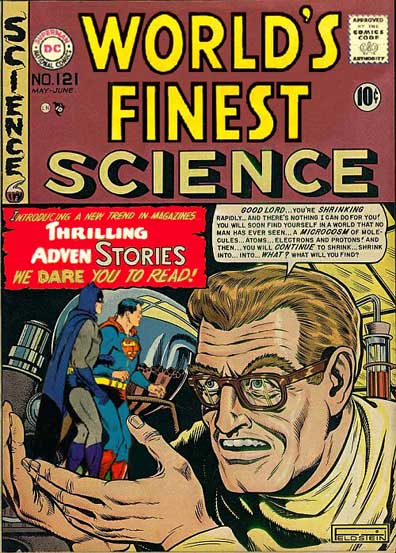
BS sci-fi is funny. Need to make a black hole to suck up your excess garbage? Use red matter! How about the ability to run super fast? Harvest and activate a metagene! Need to go back in time? Well, if you run fast enough…
When it comes to the BS science canon of sci-fi universes, its adjoining terminology can become… hilarious, to say the least. In some stories, it comprises half the entertainment value. Just take a look at the following list, which includes little jargony treasures from Asimov to Zoids:
Jupiter brain, positronic brain, hyperdrive, plasma rifle, phased polaron cannon, phased plasma torpedo, transphasic torpedo, magnetometric guided charges, metreon cascade, tachyonic antitelephone, suspensor, disruptor, replicator, transporter, tricorder, Fuzor, axial compressor, universal constructor, oscillation overthruster, Nutrimatic Drinks Dispenser, Ixian damper, Andromeda Ascendant, Dyson sphere, Tipler cylinder, Holtzman drive, Quantum Eisengate Device, MSN-001A1 Delta Plus, Gundarium Gamma alloy, super-mecha, Centauri Superweapon, Technodrome, orgasmatron, Cybertron, Megatron, Tron…
Just adorable, no?
The form of these neologisms and terms tends to find inspiration in popular science; the “positronic brain”, for instance, is the 1930’s brainchild of Asimov with deference to the then popularly publicized positron. There are other guidelines, too–many of which are rooted in the basics of ordinary science terminology. The Greek alphabet is slave to the jargon of many disciplines: organic chemists use it to distuinguish isomers, neuroscientists to categorize the frequency of brain waves, nuclear physicists to designate different forms of particle emission, etc. In fact, when it comes to scientific and sci-fi terms, anything Greek in nature is good, be it the alphabet, mythology, or just the Greek roots for common scientific prefixes and suffixes. It’s surprising Star Trek technologies don’t include a “feta impulse cannon”.
As to prefixes and suffixes for fictional nomenclature, Transformers really takes the initiative in being transparent. “Cybertron” and “Megatron” are excellent examples, containing no traditional core roots and pre/suffixes only. Breaking these words down etymologically, they just mean “computer device” and “great device”. And then, of course, there’s Tron. “Device”. Brilliant. Succinctness is good.
Evidently, something about the Greek suffix “-tron” really has an appeal for sci-fi; naturally, this comes from the word “electron” (along with others like “neutron”, “cosmotron”, and “cyclotron”–those last two almost sound fictional, don’t they?) and the subsequent “electronics”, the latter of which tends to be at the core of many sci-fi technologies. Suggesting functionality is also a quintessential facet of sci-fi suffixes; everything is an “ator” or “ater” of some kind. Clearly, in the future, all objects will perform single functions and will be accordingly named. Violins will be a brand of “musicotron” and violinists a type of “musicator”.
Things like “cyber-“, “mecha-“, and “techno-” are all obvious prefixes for sci-fi; they mean “computer”, “machine”, and “technology”, respectively (what a surprise). Others, like “hyper-“, “mega-“, and “super-” are obvious because of the classically exaggerated nature of sci-fi technology; it’s harder, better, faster, stronger, and all that. Throw the word “quantum” or a fictional scientist’s name which sounds like Einstein in front of your prefixed+suffixed word and you’ve got yourself the seeds of a winner.
Here are some other hints: toss in a random amalgam of letters (X, Y, and Z are especially recommended) and numbers in front of everything to make it seem like an item in a series. If it’s been improved repeatedly, it’s clearly ingrained in the technological history of a given sci-fi canon. 3-dimensional shapes add flair too; a “protoplasmic laser sphere” has way more gravitas than a “protoplasmic laser circle”.
Bearing in mind these traits of sci-fi terminology, I’ve invented something for you. It’s called the:
X800-Omega Cassiopeia quantum hypersuperluminotronic Eisenbeam technobooster megacybermechyone pyramid drive
If you can guess what it is, you get one absolutely FREE.

And on that note, thanks for reading.
